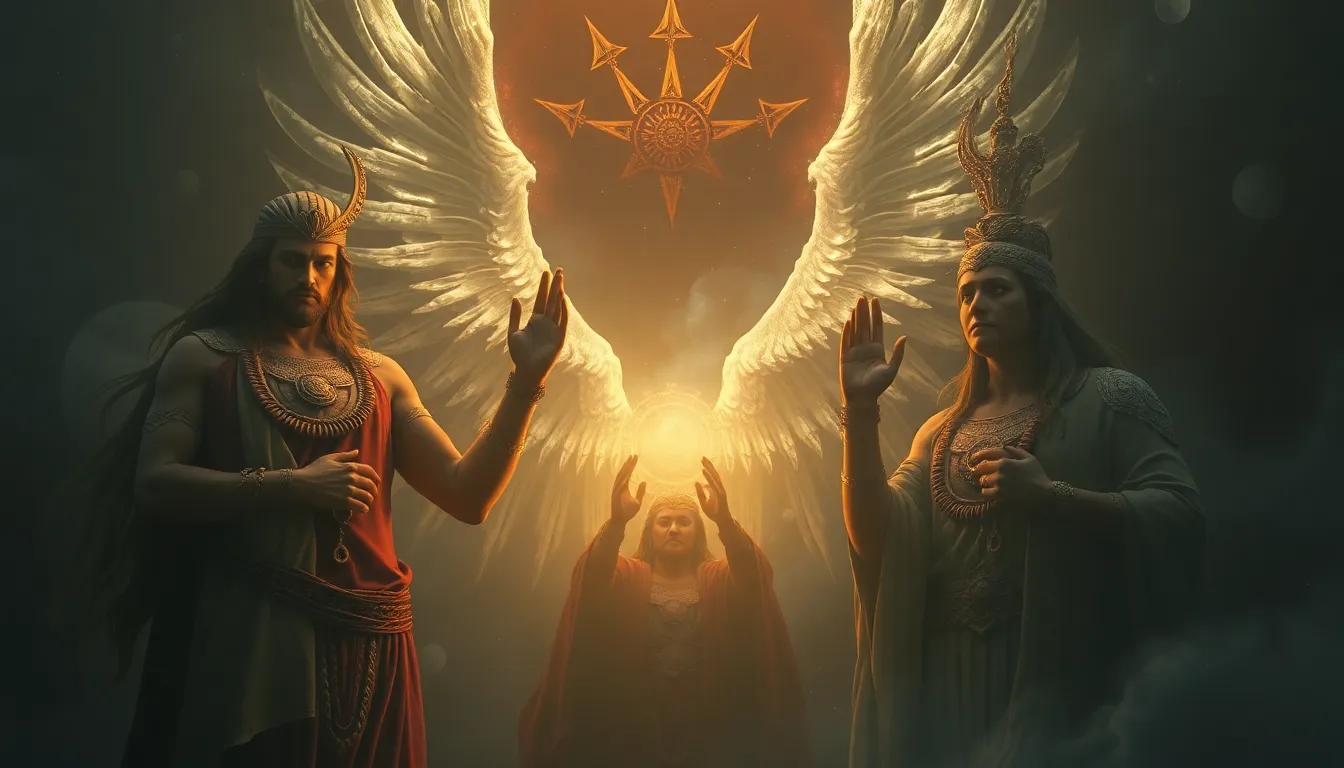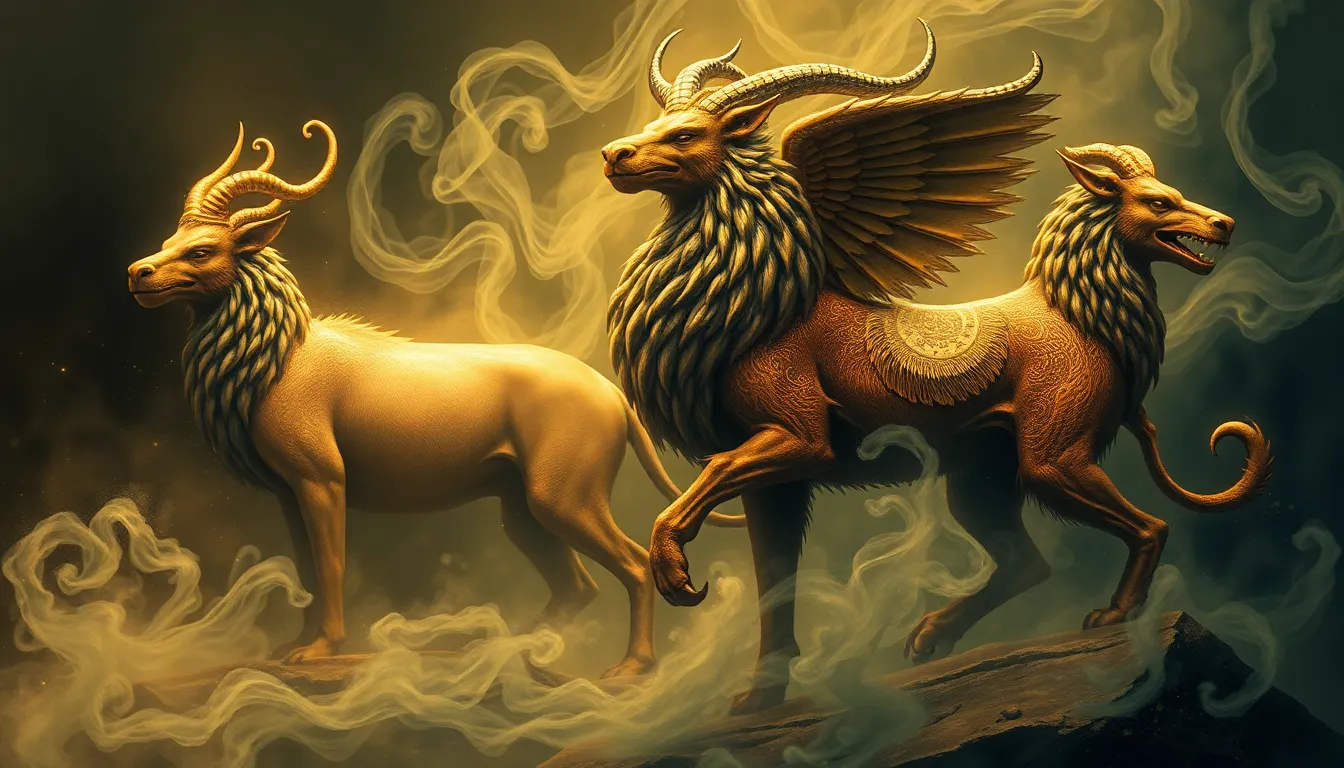The Allure of Ancient Deities: What Makes Them Timeless?
1. Introduction: The Enduring Fascination with Ancient Deities
Throughout history, ancient deities have captivated the human imagination, embodying the beliefs and values of diverse cultures. From the pantheon of gods in Mesopotamia to the divine figures of ancient Greece and Rome, these deities were not merely figments of imagination but essential components of the societies they represented. Their stories, rituals, and representations have continued to resonate through generations, prompting scholars and enthusiasts alike to explore their significance in contemporary life.
Studying ancient deities provides vital insights into the human condition and the cultural contexts from which they emerged. As we navigate an increasingly complex world, understanding these timeless figures can help us uncover the threads of our shared humanity and the values that shape our societies today.
2. Historical Context: The Birth of Deities in Early Civilizations
The concept of deities emerged in various ancient civilizations as early humans sought to explain the mysteries of the world around them. Key civilizations that contributed to the development of religious mythologies include:
- Mesopotamia: Home to gods like Marduk and Ishtar, whose narratives illustrated the complexities of life and nature.
- Egypt: With deities such as Ra and Osiris, Egyptian mythology incorporated themes of creation, death, and resurrection.
- Greece: The Olympian gods, including Zeus and Athena, represented human traits and emotions, serving as both protectors and adversaries.
- Rome: Adopting and adapting Greek deities, Roman gods like Jupiter and Venus reflected the values of Roman society.
Mythology played a crucial role in shaping cultural identity, providing frameworks for understanding natural phenomena and human experiences. These narratives helped establish norms and values, guiding social practices and ethical standards.
3. Symbolism and Archetypes: Understanding the Timeless Appeal
Ancient deities are rich in symbolism, often embodying universal themes and archetypes that resonate across cultures. Common themes associated with these gods include:
- Creation: Many deities are linked to the creation of the world, reflecting humanity’s quest for understanding its origins.
- Love and Desire: Gods and goddesses often symbolize romantic and familial bonds, illustrating the complexities of human relationships.
- Death and Rebirth: Myths surrounding death and resurrection highlight the cyclical nature of life, addressing humanity’s fear of mortality.
Archetypes, as defined by psychologist Carl Jung, represent fundamental human experiences. Deities embody these archetypes, influencing individual and collective psychology, and helping people navigate their own lives through the lens of myth.
4. Cultural Significance: How Deities Shaped Societal Norms and Values
Deities have historically influenced laws, ethics, and social structures. Their stories and attributes often reflect the values of the societies that worshiped them. For instance:
- Hammurabi’s Code: The Babylonian king claimed divine guidance from the god Marduk for his legal code, intertwining religion with governance.
- Ma’at in Egypt: The goddess Ma’at symbolized truth and justice, guiding ethical conduct and societal order.
- Athena in Greece: As a symbol of wisdom and warfare, Athena influenced Greek values around strategy, intelligence, and civic duty.
These case studies highlight how deities were not only religious figures but also cultural icons shaping societal norms and values.
5. The Role of Mythology in Human Experience
Mythology serves as a powerful storytelling tradition, providing frameworks for understanding life’s challenges and mysteries. Myths address universal human concerns, such as:
- Love: Myths often explore romantic entanglements, showcasing the joys and pains of love.
- Death: Stories of gods and mortals grappling with mortality provide insights into human fears and hopes for an afterlife.
- Fate: Many myths depict the struggle against fate, reflecting humanity’s desire for control in an unpredictable world.
Through storytelling, these myths help societies communicate values, ethics, and collective experiences, reinforcing communal bonds.
6. Revival of Interest: Ancient Deities in Contemporary Culture
In recent years, there has been a resurgence of interest in ancient deities across various cultural mediums. This revival can be observed in:
- Literature: Novels and series often draw inspiration from ancient myths, reimagining deities for modern audiences.
- Film: Movies like “Thor” and “Clash of the Titans” bring ancient gods to contemporary screens, captivating new generations.
- Art: Modern artists reinterpret ancient themes, exploring the relevance of these deities in today’s world.
Additionally, the resurgence of paganism and neo-mythology reflects a growing interest in ancient spiritual practices, allowing individuals to connect with these timeless figures.
7. Psychological Perspectives: The Connection Between Deities and Human Psyche
Carl Jung’s theories on mythology and the collective unconscious offer valuable insights into why ancient deities hold such enduring appeal. He proposed that:
- Mythological figures represent archetypes that resonate within our psyche.
- These archetypes can be therapeutic, helping individuals navigate personal challenges and emotions.
Therapeutic practices often incorporate elements of ancient mythology, allowing individuals to explore their struggles through the lens of these timeless narratives.
8. Interdisciplinary Approaches: The Study of Ancient Deities Through Art and Archaeology
The study of ancient deities benefits from interdisciplinary approaches, combining insights from archaeology and art history. Archaeological discoveries provide context for understanding religious practices, while artistic representations offer rich interpretations of deities. Key points include:
- Archaeological finds, such as temples and artifacts, reveal the ways societies honored their gods.
- Artistic depictions evolve over time, reflecting changing cultural attitudes towards deities.
These insights contribute to a deeper understanding of the role of deities in shaping human experiences and cultural identities.
9. Cross-Cultural Comparisons: Similarities and Differences Among Deities Worldwide
A comparative analysis of deities from different cultures unveils fascinating similarities and differences. For example:
- Hinduism: Gods like Vishnu and Shiva embody complex roles, similar to the multifaceted nature of Greek gods.
- Norse Mythology: Deities like Odin and Thor reflect the values of strength, valor, and wisdom, paralleling themes in other pantheons.
- African Mythology: Ancestors and nature spirits represent a deep connection to the land and community, showcasing different cultural expressions.
These comparisons reveal shared human experiences and values reflected in diverse pantheons, illustrating the universal nature of mythology.
10. Conclusion: The Timeless Nature of Ancient Deities and Their Relevance Today
The allure of ancient deities lies in their ability to transcend time and culture, offering profound insights into the human experience. As we explore their stories and significance, we gain a deeper understanding of ourselves and the world around us. The study of mythology remains vital, illuminating the values, fears, and aspirations that define our existence.
In a world that often feels fragmented, the narratives of ancient deities serve as a reminder of our shared heritage and the timeless themes that resonate through history, reinforcing the importance of mythology in understanding the complexities of human life.




